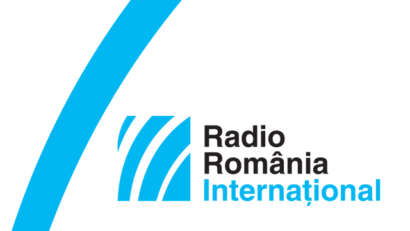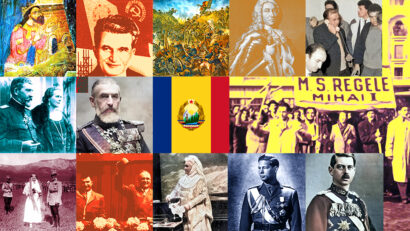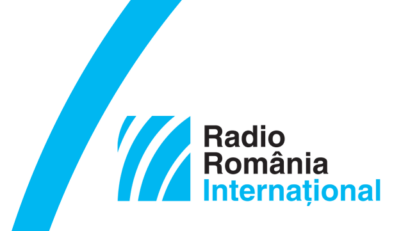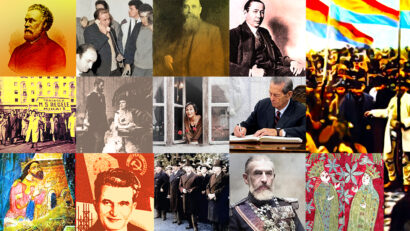Myths of the Romanian anti-communist revolution
On
the 22nd of December 1989, at 12.08 am, Nicolae Ceausescu and his
wife Elena were taking off by helicopter from the rooftop of the building
housing the Central Committee of the Romanian Communist Party in Bucharest. Their
flight paved the way for the end of the communist dictatorship and for the
restoration of democracy in Romania. However, soon after that glorious moment,
doubt began to creep in. All kinds of myths began to appear that tried to
destroy what had been earned through bloodshed. Like all myths, those connected
to the Romanian revolution are extremely powerful, being constantly fed by the
many mysteries that still exist. One of the most persisting myths is that of
the hijacking of the revolution by Ion Iliescu and his entourage. A
high-ranking activist in the Communist Party, Iliescu was also Romania’s first
post-communist president. The party backing him, the National Salvation Front,
was made up of people from the lower ranks of the Communist Party, which made
people think that the revolution of December 1989 was an arrangement intended to
bring Ion Iliescu to power. Dragos Petrescu is the author of a number of comprehensive
studies on the revolutions of 1989. We asked him to comment on the myth of the
hijacked revolution.

Steliu Lambru, 23.12.2019, 14:00
On
the 22nd of December 1989, at 12.08 am, Nicolae Ceausescu and his
wife Elena were taking off by helicopter from the rooftop of the building
housing the Central Committee of the Romanian Communist Party in Bucharest. Their
flight paved the way for the end of the communist dictatorship and for the
restoration of democracy in Romania. However, soon after that glorious moment,
doubt began to creep in. All kinds of myths began to appear that tried to
destroy what had been earned through bloodshed. Like all myths, those connected
to the Romanian revolution are extremely powerful, being constantly fed by the
many mysteries that still exist. One of the most persisting myths is that of
the hijacking of the revolution by Ion Iliescu and his entourage. A
high-ranking activist in the Communist Party, Iliescu was also Romania’s first
post-communist president. The party backing him, the National Salvation Front,
was made up of people from the lower ranks of the Communist Party, which made
people think that the revolution of December 1989 was an arrangement intended to
bring Ion Iliescu to power. Dragos Petrescu is the author of a number of comprehensive
studies on the revolutions of 1989. We asked him to comment on the myth of the
hijacked revolution.
I think the idea that the revolution was hijacked or confiscated circulated
from the very first moments of the change of regime, immediately after 22nd
of December 1989. We suddenly saw coming to power the second and third echelons
of the former Communist Party which replaced Ceausescu’s inner circle, the
nomenklatura, the people at the very top of the Romanian Communist Party who
were blamed for all the problems of the 1980s: the profound economic crisis,
extreme nationalism, the assimilation of ethnic minorities and Romania’s
disastrous image abroad.
The
myth of the hijacked revolution is very strong among public opinion and
Dragos Petrescu believes it hinders a fair evaluation of the changes that have
taken place in the last 30 years:
If we believe that Iliescu and his group confiscated or stole the revolution I
think we could destroy one of the most magical moments of Romania’s 20th
century history. The revolution was the most interesting moment and the moment
that could really make us proud to be Romanian, beyond the empty nationalism of
the common expression ‘proud to be Romanian’. Why? Because we would be denying
the fundamental moments of the Romanian revolution. The violent repression of
the revolution in Timisoara, of the people’s protest that turned into a
revolution, and other such moments, could not have been controlled by Iliescu.
The transition from what happened in Timisoara to what happened in Bucharest on
the 21st December 1989 when Ceausescu tried to reenact the
successful moment of 21st August 1968 when he condemned the
intervention of the Warsaw Pact in Czechoslovakia could also not have been
orchestrated by Iliescu, because it wasn’t Iliescu who made Ceausescu organise
that rally.
The
second myth that gained a firm stronghold in the collective mind of Romanians
was that the revolution of 1989 was a coup d’état. Dragos Petrescu says this
myth was generated by the same course of events:
We’re dealing in this case with a very interesting historical exercise. Often,
what happens after a certain event makes us change our opinion about the
respective event. In other words, the frustration felt by many Romanian
citizens, especially in respect of the slow pace of reforms and the fact that Romania
only very slowly advanced towards Europe, made them deny the change that
occurred on 22nd December 1989. The slow change, the very slow
democratic process, the coming to power of many from the former middle-rank
nomenklatura, the technocrats with links to the Romanian Communist Party, all
these made Romanians deny their participation in a very important, fundamental
event, I’d say, for the Romanians. The change was real, Romania did go through real
regime change, through a revolution, and 1,100 people dead and 3,300 wounded
make Romania the only example of a real revolution.
The
myth of the terrorists, the third most powerful myth connected with the
Romanian revolution, was, however, initiated by the new post-communist
government represented by Ion Iliescu and the National Salvation Front, a myth
very few Romanians still believe. Dragos Petrescu says it was a myth that
perfectly served the aims of those who had just come to power:
The issue of the terrorists is strictly connected to the issue of the almost
900 tragic and useless deaths caused by the diversion and confusion that
followed after 22nd of December and which is the work of the new
government. In my opinion, the confusion was clearly maintained intentionally
by those connected with the new government to help it consolidate its power.
Moreover, it served to put an end to the people’s revolutionary drive that
could have led to calls for the immediate punishment of those who were guilty
of abuses during the communist period, in particular former secret police
officers and former members of the communist party in decision-making
positions. The myth of the terrorists helped fuel the diversion and confusion
and Ion Iliescu constantly maintained it.
Fortunately,
however, the myths of the Romanian revolution aren’t stronger than the
awareness of what was achieved in 1989, namely a return to normality.






























